In today's fast-paced business world, sometimes tough decisions must be made, and layoffs can be a challenging yet necessary part of maintaining stability within a company. Understanding the emotional impact on employees, it's crucial to approach the situation with empathy and clarity. A well-crafted termination notice not only conveys the necessary information but also respects the contributions of the affected team members. If you're looking for a thoughtful template or guidance on how to navigate this difficult process, keep reading to explore more insights.
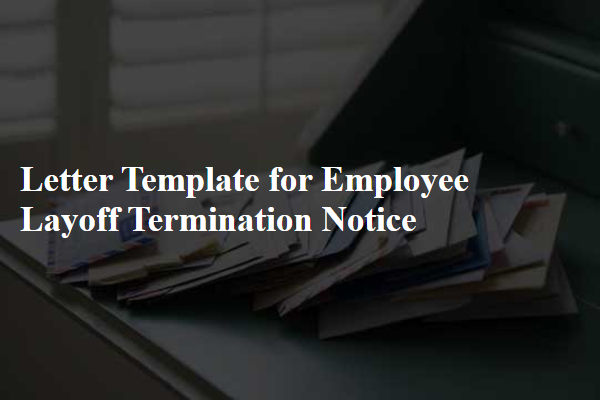
Legal Compliance
Employee layoffs often require clear communication regarding termination, ensuring legal compliance with regulations. An employer must provide a formal notification that outlines termination reasons, specifics of severance pay, and benefits continuation, adhering to the Worker Adjustment and Retraining Notification (WARN) Act for mass layoffs. Dates relevant to the layoff notification, including the final working day and any required return of company property, should be explicitly detailed. Important information about unemployment benefits eligibility and support services, such as resume workshops or career counseling, can be beneficial, guiding the affected employee through a challenging transition period. The tone remains respectful and acknowledges contributions made by the employee to the organization.
Clear Language and Tone
An employee layoff notification requires a sensitive and direct approach. The notice should clearly communicate the company's decision, effective date, and any relevant details regarding severance packages or benefits. A sample may include a clear statement regarding the termination of employment, a brief explanation of the reasons for the layoff, and information about final paycheck procedures. It must also express appreciation for the employee's contributions to the organization while offering support during the transition, whether through job placement services or counseling options. Note: It is essential to ensure compliance with local labor laws and company policies when crafting such notices.
Reason for Layoff
Employee layoffs often stem from various reasons related to organizational changes, such as economic downturns or restructuring efforts to enhance operational efficiency. Companies may face financial challenges, leading to difficult decisions aimed at cost reduction, including workforce downsizing. In instances of mergers or acquisitions, overlapping job functions may prompt layoffs to streamline operations and eliminate redundancy within the new organizational structure. Changing market conditions, such as decreased demand for products or services, can also necessitate workforce reductions. Understanding these circumstances is crucial for employees to gauge the broader context surrounding their layoff notice.
Transition Details
The employee transition period following layoffs can significantly impact the overall morale and productivity of a company. Effective communication during this phase helps to ease fear and uncertainty among remaining employees. Clear guidelines addressing severance packages, outplacement services, and final paycheck details must be provided to ensure transparency and support. Also, scheduling exit interviews allows for valuable feedback, fostering an environment of continuous improvement. These efforts promote a respectful departure process, potentially strengthening relationships for future networking opportunities. Overall, proactive measures during this transition can mitigate negative effects on workplace culture and maintain team cohesion.
Support and Resources Provided
Employee layoffs can create an emotional and challenging environment for those affected. The company recognizes this difficult situation and is committed to providing support and resources to assist employees during this transition. Affected employees may have access to professional career counseling services, helping them refine their resumes and prepare for job interviews. The company also offers job placement assistance through partnerships with local workforce development agencies. Additionally, affected employees can participate in workshops focused on skill development, enhancing their employability in the competitive job market. Resource materials, including guides on unemployment benefits and financial planning, are available to ease the financial burden. Access to mental health support services is provided, recognizing the emotional impact of job loss. Employees are encouraged to utilize these resources to navigate this transition effectively.
Letter Template For Employee Layoff Termination Notice Samples
Letter template of employee layoff termination notice for economic reasons

Letter template of employee layoff termination notice due to restructuring
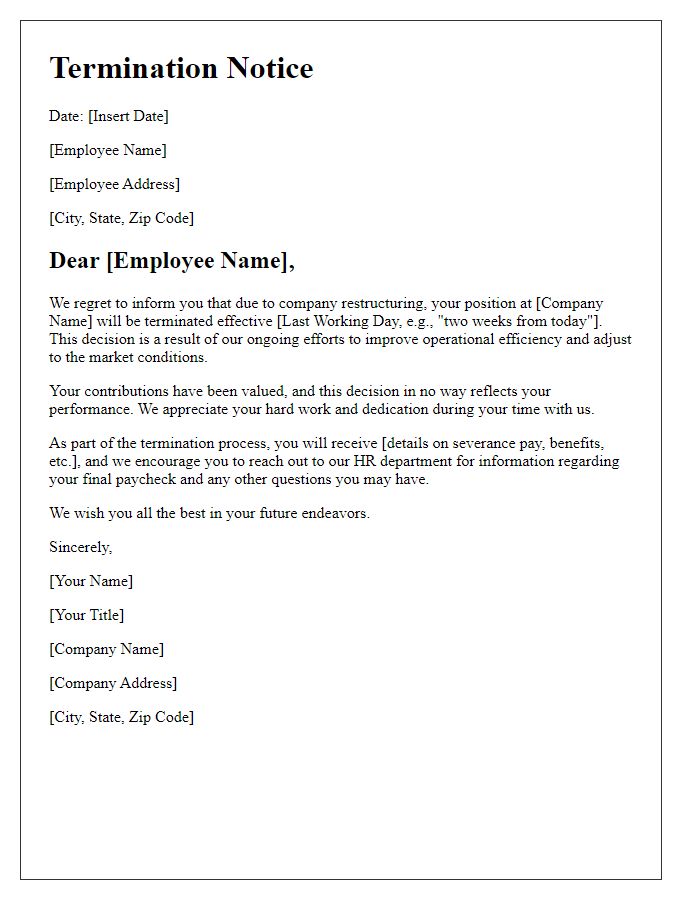
Letter template of employee layoff termination notice for performance issues
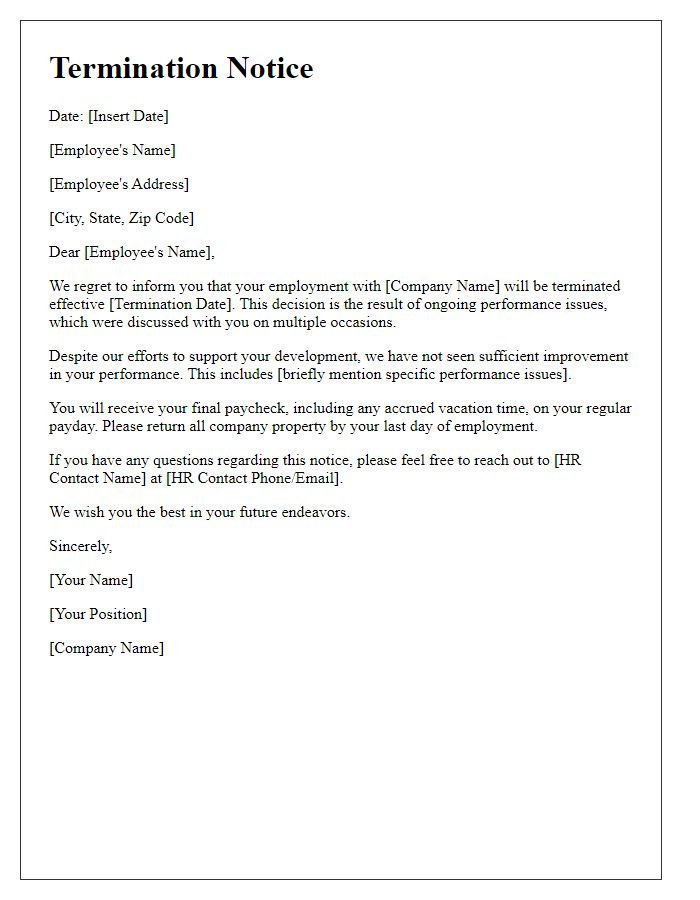
Letter template of employee layoff termination notice for project completion
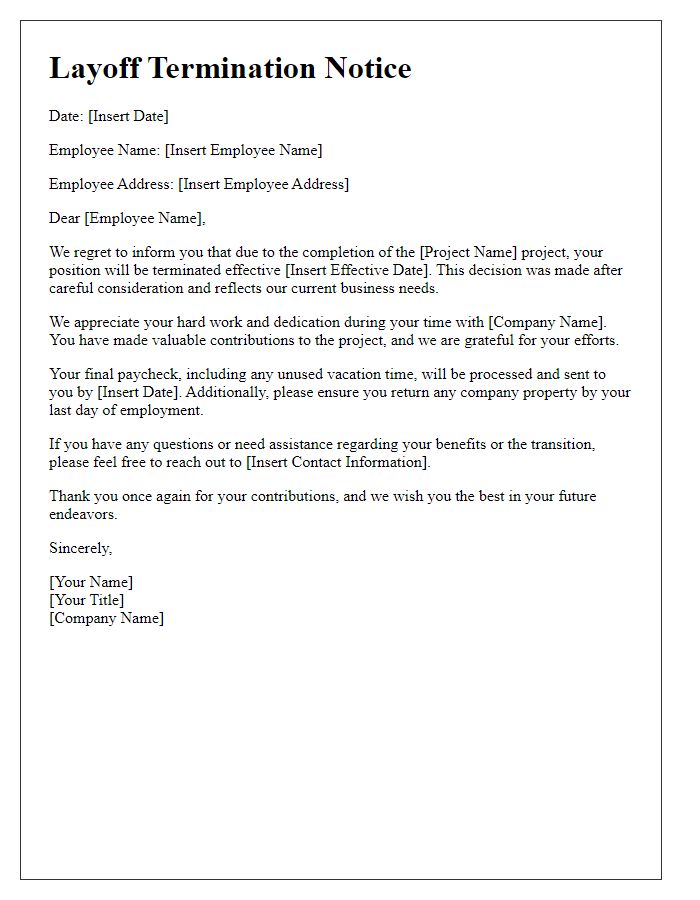
Letter template of employee layoff termination notice in response to market changes
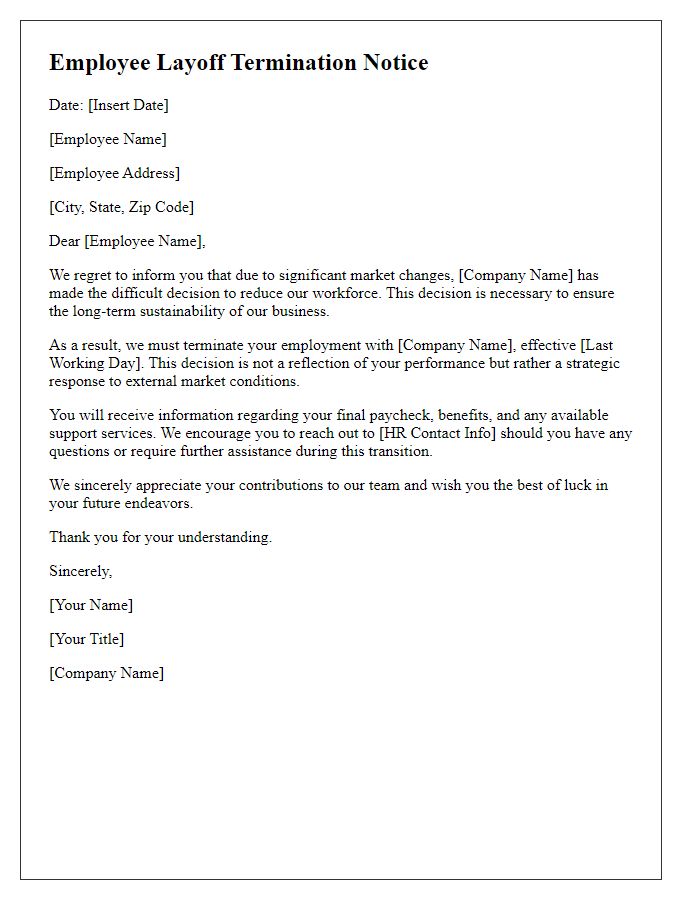
Letter template of employee layoff termination notice for departmental downsizing
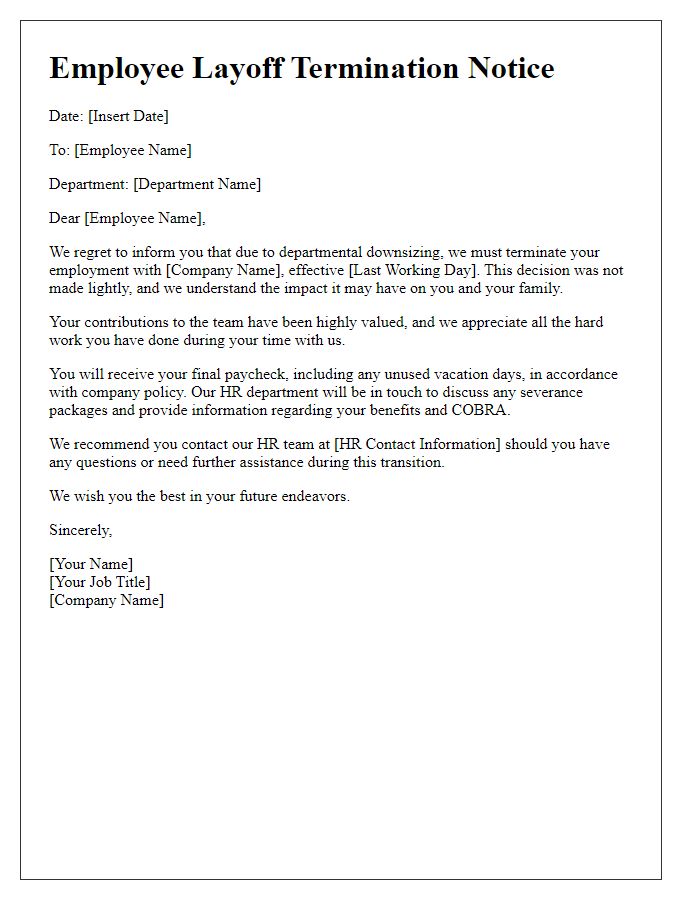
Letter template of employee layoff termination notice for temporary layoffs
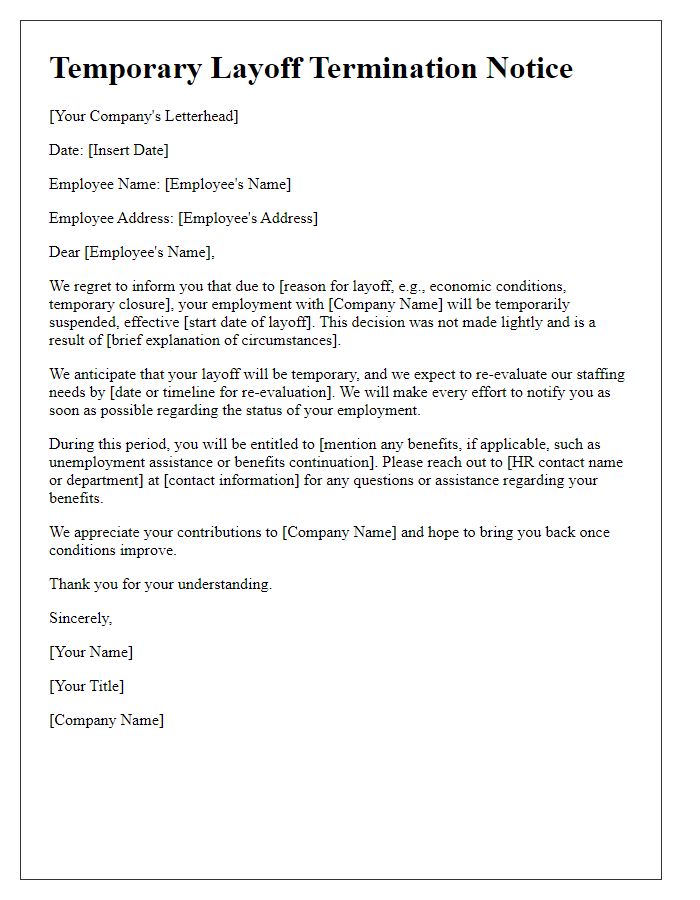
Letter template of employee layoff termination notice due to budget cuts
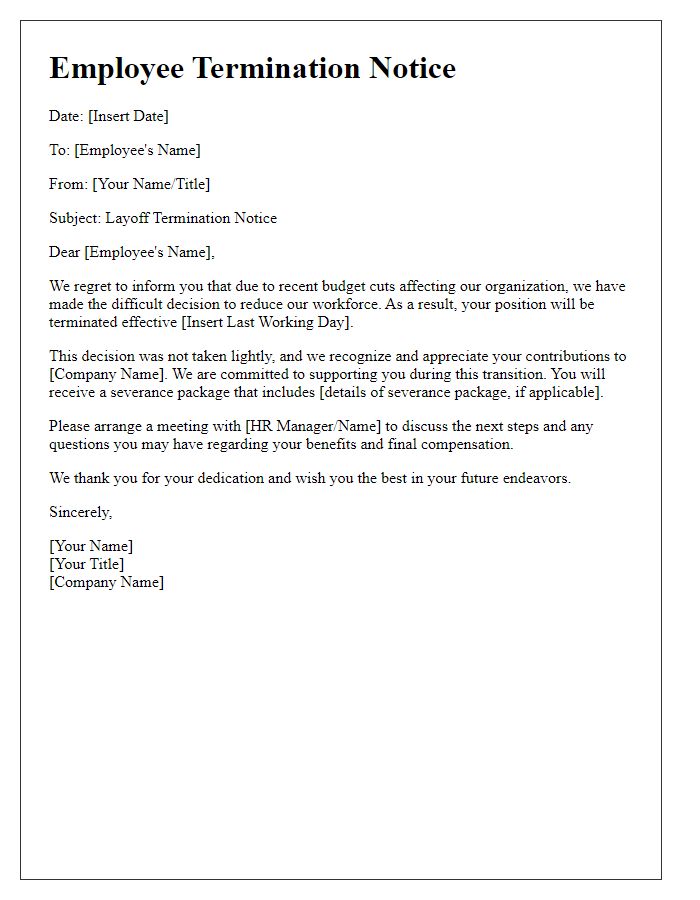
Letter template of employee layoff termination notice for staff reduction
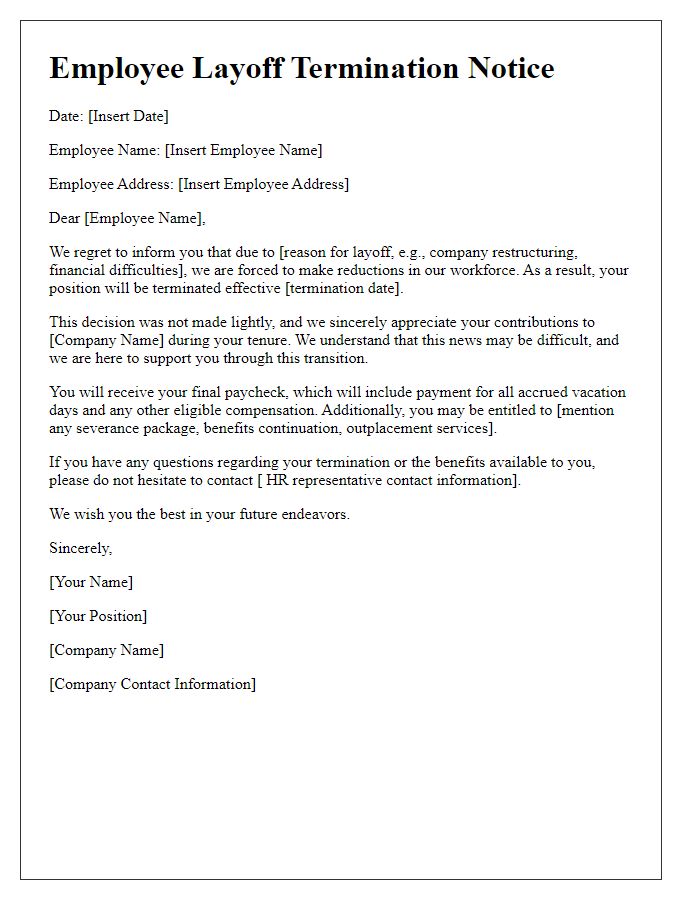

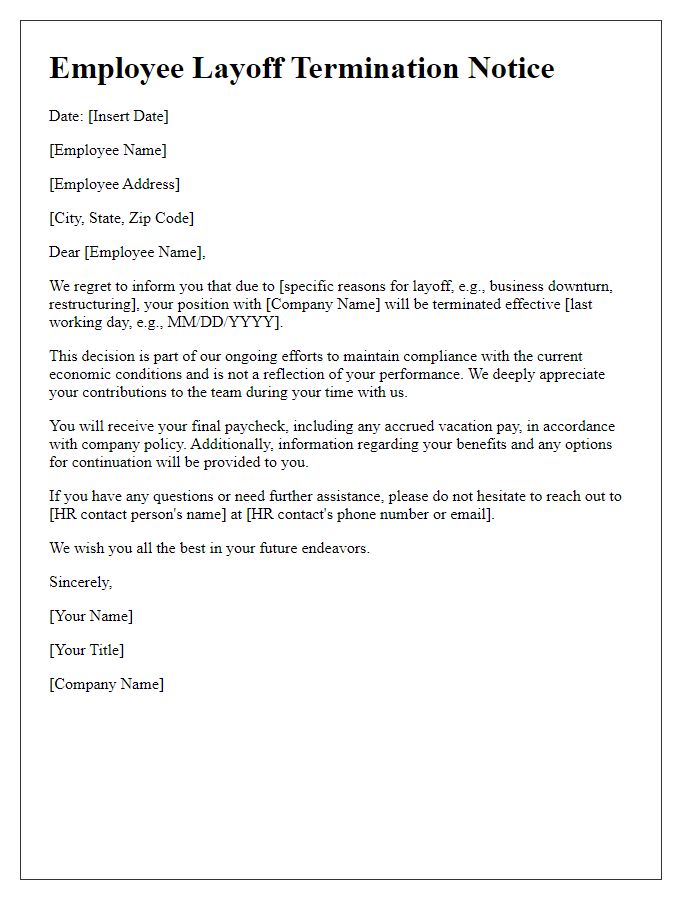


Comments